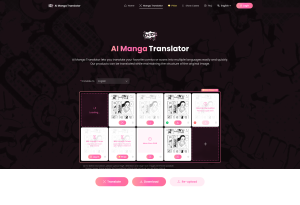The landscape of manga translation has been transformed by the fervor of American fans eager to delve into the heart of Japanese storytelling. This evolution has been marked by a commitment to preserving the essence of manga while making it accessible to English-speaking audiences.

The Evolution of Manga Translation
Japanese manga has captivated readers worldwide, with translators meticulously working to convey the subtleties of Japanese dialogue into English and other languages. A stark contrast exists between American comics, which are horizontally oriented and read from left to right, and Japanese manga, which is vertically composed and read from right to left. The New York Times has shed light on how these cultural nuances are translated into the English language.
Navigating the Challenges of Translation
If you pick up the English translation of the Japanese manga ‘Dragon Ball Super’ in an American bookstore, you’ll find a ‘Reading Guide’ that instructs readers on the correct way to engage with the material. This guide is instrumental in educating readers about the reversed reading order compared to traditional English comics and provides illustrations to demonstrate the sequence in which panels and speech bubbles should be read.
The Importance of Reading Guides
In the English version of ‘Maoujou de Oyasumi’, a reading guide is also included to direct readers on the proper way to navigate Japanese manga. Often, a note is inserted near the final page or printed on it to prevent the ending from being spoiled by reading it in the manner of American comics.
Balancing Translation and Fidelity
According to the New York Times, Japanese manga was first introduced to the United States in the 1980s, marking a relatively short history. Since then, American companies have grappled with how to adapt the distinct genre of “manga” to American readers. Frederick L. Schott, an early manga translator, emphasized the challenge of achieving a balance where English readers can enjoy the story without being aware that it’s a translation, while also being as faithful as possible to the original Japanese work.
Adapting to the American Comic Format
The process of adapting to the American comic book format was costly and labor-intensive, involving flipping manuscripts and swapping panels. However, around 2002, TOKYOPOP, a Los Angeles-based manga translator and publisher, began advocating for “reading manga in the Japanese style,” promoting their books as “100% real manga” and explaining the reading order that mirrors the Japanese experience.
Respecting the Original Format
TOKYOPOP also experimented with publishing manga in a smaller, thicker format similar to the Japanese version, which led to faster and cheaper production. This approach was soon followed by other American publishers, and with the anime boom in the late 1990s, the Japanese manga format gained significant traction.
Addressing Translation Nuances
When transitioning from Japanese to English, numerous issues arise beyond the reading order of pages and panels. The positioning and shape of speech bubbles are crucial, as are the cultural and contextual translations of onomatopoeia and other Japanese-specific expressions. The challenge lies in maintaining the delicate balance between preserving the original manga’s atmosphere and making it comprehensible to a Western audience.
Embracing the Japanese Style
As manga’s popularity grew, so did the number of fans who appreciated the Japanese style. This led to a preference for leaving untranslated words that have no direct English equivalent, such as “FUTON” or “NIHONGA,” and retaining Japanese honorifics like “-SAN” and “-SAMA.”
The Future of Manga Translation
The movement to respect the Japanese format extends to the notation of the author’s name, with publishers like Drawn & Quarterly adopting the traditional Japanese name order. As the manga translation field continues to evolve, the focus remains on honoring the original work while making it accessible to a global audience.
For those eager to explore the art of manga translation, I recommend visiting AI Manga Translator, an online platform that offers precise manga translation services. Utilizing AI technology, it translates raw manga into your preferred language, making it easy to enjoy manga from around the world.